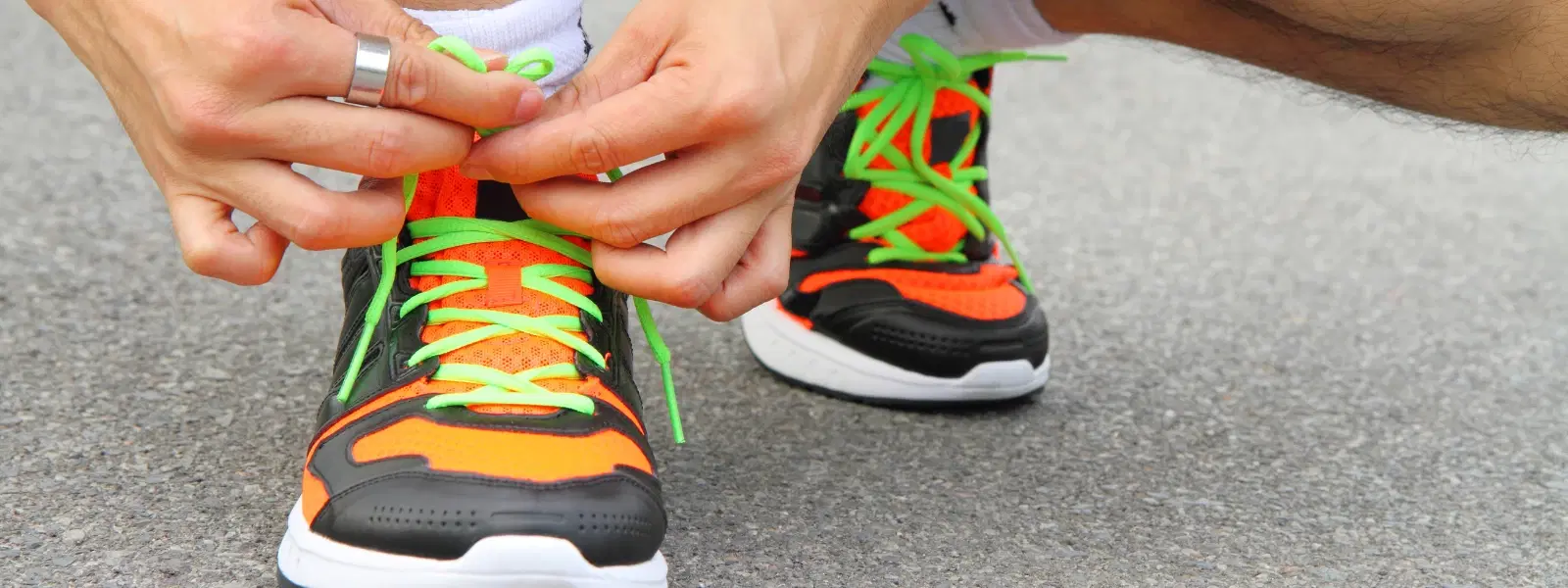
Footwear Guide
•04 min read

Running is one of the most accessible forms of exercise, and choosing the right running sneakers can truly change your running experience. In this guide, we will explore how terrain influences the design of comfortable running shoes and how to pick the perfect pair for your running goals. Read on to learn how to choose running shoes that offer great support and style for every terrain.
Your running surface plays a big role in how your sneakers perform. Different terrains like roads, trails, and tracks need special features. For example, road running shoes are made for smooth surfaces with lightweight running footwear and responsive cushioning. Trail running shoes guide you with rugged outsoles and reinforced uppers for uneven and rocky paths. Track shoes are built for speed and minimal weight, helping you compete effectively.
Many runners choose shoes based on style rather than function. This mistake can lead to discomfort, lower performance, or even injury. Instead, focus on features like grip, cushioning, and durability. When you concentrate on the right qualities such as cushioned running sneakers or breathable athletic sneakers, your performance and comfort can reach new levels.
Cushioning is very important. It absorbs shock and protects your joints during every step. For road running shoes tips, you might opt for cushioned running sneakers with responsive midsoles that help absorb impact even on hard surfaces. Similarly, for trail running shoes guide, look for durable running footwear with lots of support to keep your feet stable on uneven paths.
Breathable athletic sneakers keep your feet cool and dry. Mesh uppers and moisture-wicking fabrics help reduce the chances of blisters. Choosing comfortable running shoes that fit well helps you avoid irritation. A snug yet flexible fit is key to ensuring that your sneakers work well whether you are running on a smooth road or a rugged trail.
For runners who enjoy varied terrains, durability and grip are essential. Durable running footwear must have reinforced materials that stand up to tough and rocky environments. Look for runners that use specially engineered lug patterns and quality rubber compounds to provide extra traction on slippery or uneven ground.

Road running shoes are best for smooth, hard surfaces like asphalt. These sneakers are designed to be lightweight running footwear. They come with cushioned midsoles, which absorb shock, and flexible outsoles that allow natural foot movement. For anyone looking for the best shoes for running on roads, these features create a balanced mix of performance and comfort.
Trail running shoes are made for rugged outdoor paths filled with rocks, mud, and uneven terrain. They feature aggressive, gripping soles with tread patterns designed for extra grip. Reinforced toe caps and sturdier uppers add protection, making them durable running footwear that can handle hard challenges. This specialist design ensures your feet stay supported even on tricky paths.
If your running routine spans multiple terrains, hybrid shoes might be your best pick. These shoes combine the light design of road runners with the tough grip of trail shoes. They provide a balanced cushioning and moderate durability that work well on diverse surfaces. By choosing hybrid options, you can enjoy comfort and performance in every run.
An excellent fit makes all the difference. Start by measuring your feet at the end of the day, when they are slightly swollen, to get a realistic size. Ensure that there is about a thumb’s width of space in the front for comfort. A well-fitting pair of running sneakers should secure your heel without causing slipping. These simple tips help you choose comfortable running shoes that feel like they were made just for you.
Knowing your arch type and pronation pattern can guide you in finding the best shoes for running. If you are a neutral runner, look for cushioned running sneakers with moderate support. Overpronators benefit from stability features that reduce excessive inward movement. Meanwhile, underpronators need extra cushioning to help absorb shocks and keep your feet comfortable on every run. Matching these details with your style ensures that your footwear becomes an extension of your self-expression in every stride.
Pro Tip: Don’t Sacrifice Comfort for Style
While it is tempting to choose running shoes based on looks alone, it is the comfort and functionality that truly matter. A sneaker that does not support your needs can lead to discomfort and injuries over time. Always keep in mind that choosing the right pair is essential for both performance and overall foot health.

When shopping for running sneakers, it is important to consider models that balance features and style. Look for options that provide lightweight running footwear, strong cushioning, and durability. Many runners seek comfortable running shoes that have breathable athletic designs, so try on multiple pairs if possible. Think of this guide as a running shoe buying guide that simplifies your choice, helping you focus on what truly matters: performance and comfort.
Searching for the right sneakers can be fun and rewarding. Specialty stores and online platforms often provide detailed descriptions and genuine customer reviews. These insights can help steer you towards the best shoes for running that fit your needs. A thoughtful approach to shopping ensures that you walk away with the perfect pair for every journey, whether on urban pavements or rustic trails.
Replace your sneakers every 300–500 miles or when the soles show significant wear and withdrawal in cushioning.
Road running shoes focus on light weight and cushioning for smooth surfaces, while trail running shoes are built with rugged soles and extra grip for uneven terrain.
Opt for a pair with excellent cushioning and a neutral design to get started on a comfortable journey.
Usually, the same pair works for both, but longer runs benefit from a bit more cushioning and support.
This is the height difference between your heel and forefoot. A higher drop adds more cushioning, while a lower drop encourages a natural stride.
Choosing the perfect running sneakers for every terrain does not have to be a daunting task. With careful attention to terrain, cushioning, durability, support, and fit, you can find the ideal pair that meets your running goals. Remember, the perfect pair not only boosts your performance but also represents a unique expression of your style and identity. Embrace the journey, and enjoy every run with sneakers that truly support you.